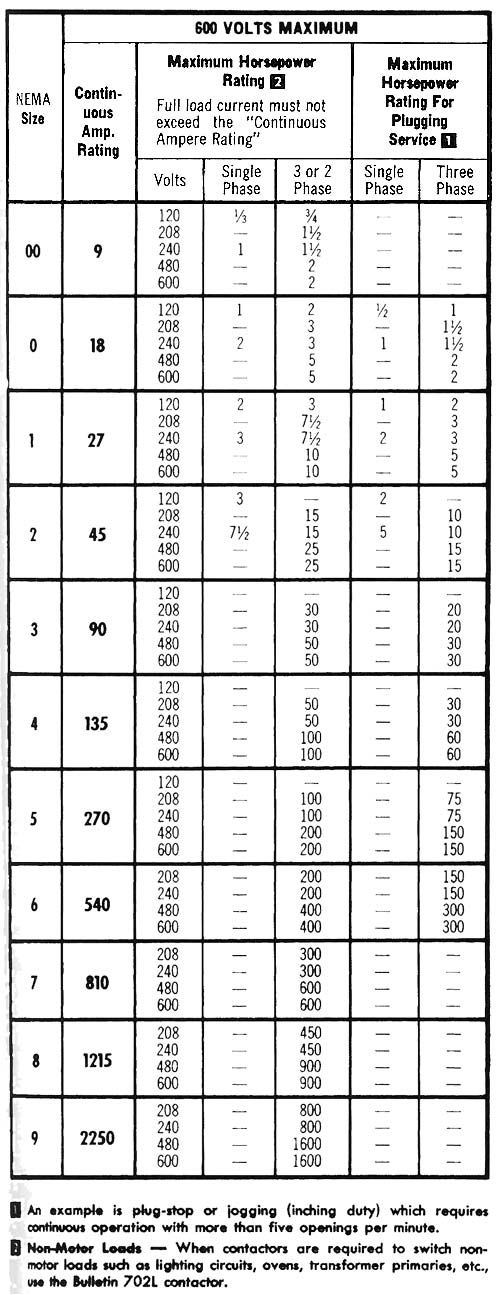AMAZON multi-meters discounts AMAZON oscilloscope discounts
Motor starters use the same table as contactors for determining the correct size for controlling a motor. The table in Ill. 11-29 includes ratings for motor starters and the loads are listed as horsepower ratings. The table also provides maximum ratings for each motor starter when it's used in plugging applications. Plugging means that two legs of the voltage supplied to a three-phase motor are switched to cause the motor's shaft to rotate in the opposite direction. The plugging (reverse) voltage is only applied for a short period of time, usually less than 1 second, so that the motor shaft stops quickly. The voltage is disconnected before the motor's shaft can actually start to turn in the opposite direction.
Plugging causes the motor to draw very large currents for a short period of time so the size of the motor starter must be downsized to account for the additional heat that tends to build up when the larger currents are pulled.
Exercise
Use the table below to determine the proper size motor starter to select for an application that uses a 20hp motor powered by 480 volts three phase. This motor is not used for plugging.

Solution
Since the motor is a three-phase motor, and it uses 480 volts, one will need to move through the table to locate these two conditions. The table lists 15hp and 25hp motors. Since the 20hp motor is not listed, one should select the next higher motor size that's listed. In this application the size 2 motor starter would be selected since it can be used for motors up to 25hp at 480 volts three phase.

